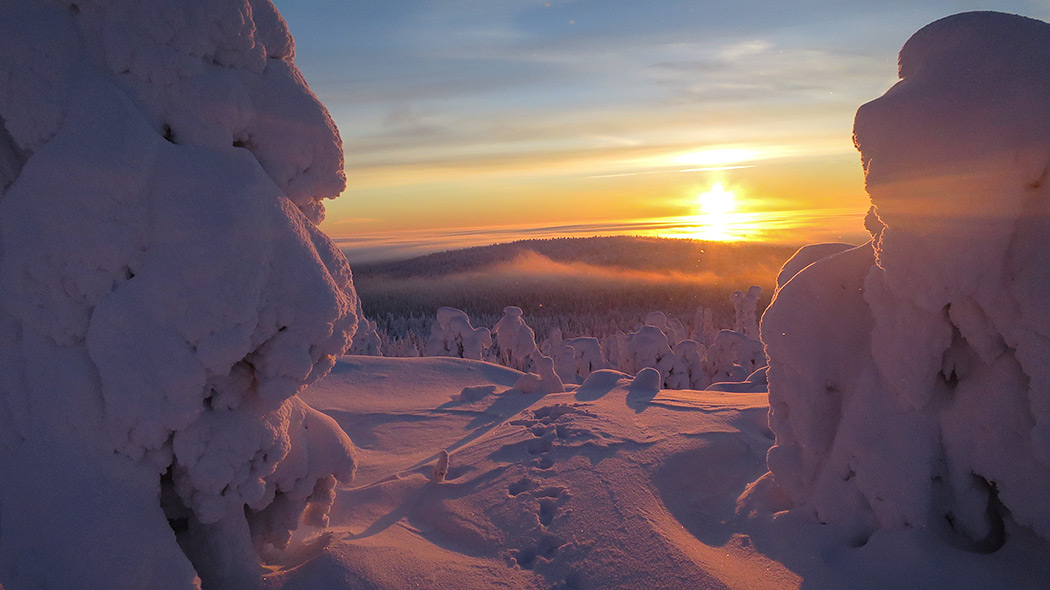Natural Features of Iso-Syöte Hiking Area

Together with its neighbour, Syöte National Park, the Iso-Syöte Hiking Area offers unparalleled outdoor recreational opportunities in Finland's southernmost fells. Pristine forests, lush slope mires and trees encrusted with snow will astonish park visitors.

Finland's southernmost fell Iso-Syöte
On the hill, your eye catches a rock covered in pale green lichen. A stunted pine tree grows next to it, despite the barren landscape and the fact that one and a half metres of snow may cover the ground in the winter. The last steps lead you to a gorgeous view.
Iso-Syöte dominates the entire Syöte landscape. It is Finland’s southernmost fell, rising to the height of 431 metres above sea level. Earlier in history, it was a lonely island in the endless sea covering the land after ice age. From the top of the fell, there are breathtaking views in all directions: The National Park unfolds in the north, while in the south, you can admire the Romevaara Hill. The top of the fell is easily accessible from the premises of Hotel Iso-Syöte.

Beautiful fell flora
Iso-Syöte has been defined as a fell because Alpine bearberry (Arctostaphylos alpinus) grows on its top. During the autumn, Alpine bearberry turns fabulously reddish, and a trip to the top of the fell is particularly worthwhile during the cool autumnal mornings after a slight frost. Its ripe berries are raven black, resembling crowberries. Similarly to crowberries (Empetrum), bearberries have a very mild flavour, and they are not poisonous.
It is recommendable to bring a pair of binoculars and a bird book when climbing up Romevaara Hill. While camping on the hill, you may come across a Siberian tit (Poecile cinctus) which resembles a willow tit (Poecile montanus), or a common redstart (Phoenicurus phoenicurus) with a beautiful orange tail. It is easy to spot a brambling (Fringilla montifringilla) from a long distance away, as the species has a very distinctive, wheezy singing voice.

Romesuo, a flark mire in its natural state
In the view towards the west from the top of Iso-Syöte, your attention is drawn to Romesuo, an open-water flark mire, which started to paludify 8,000 years ago as a result of a forest fire. At that point, the forest flora was destroyed and the groundwater surface started to rise in the area. Nowadays, Romesuo is part of an important network of mires that stores the plentiful meltwaters in the spring and prevents the rise of floodwaters elsewhere in Ostrobothnia. Have you come across cranberries on the edge of Romesuo?
You can find further information on the nature of Syöte on the nature page of Syöte National Park.
Iso-Syöte Hiking Area
- Established 1985
- Area 11 km²






